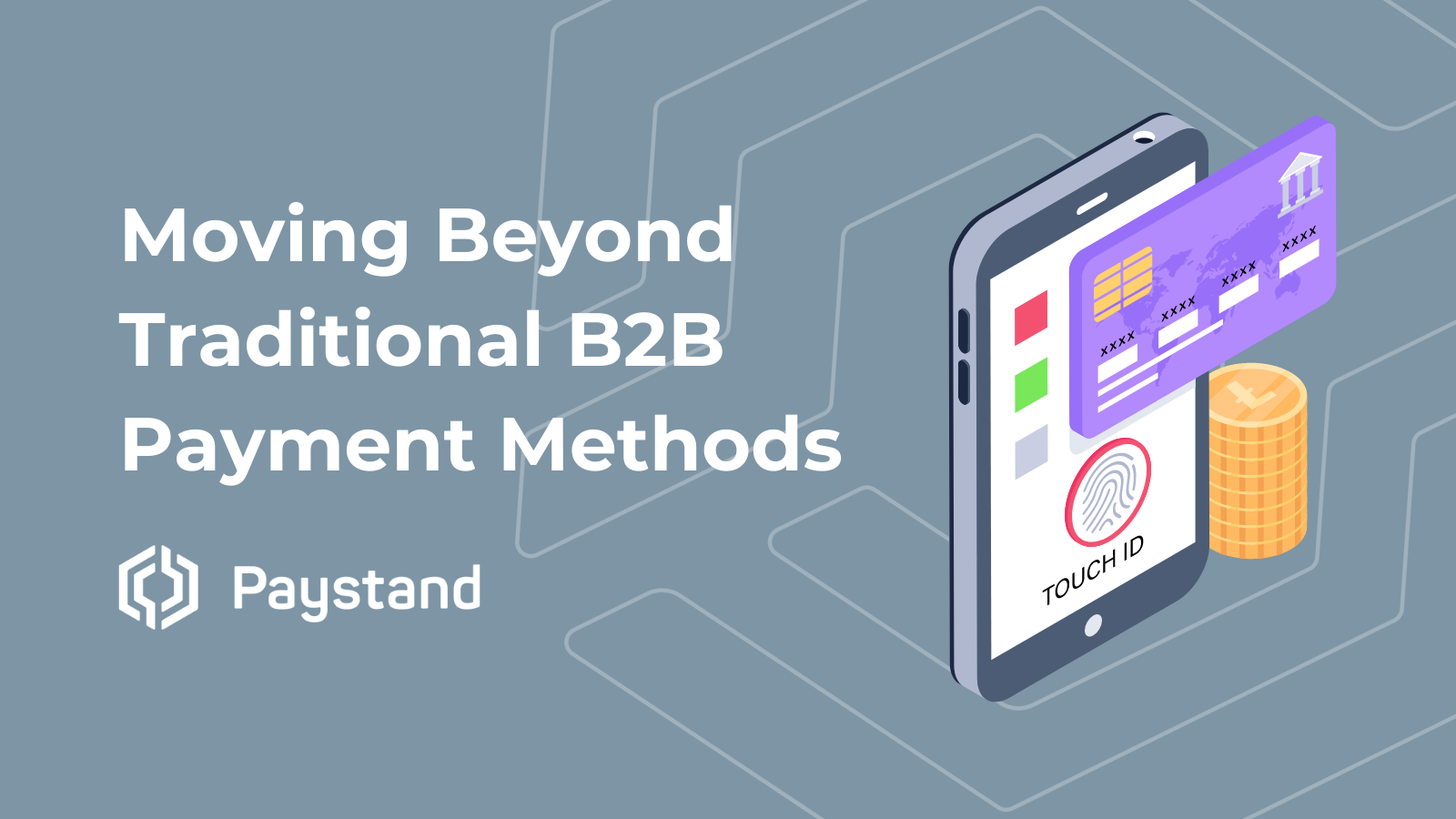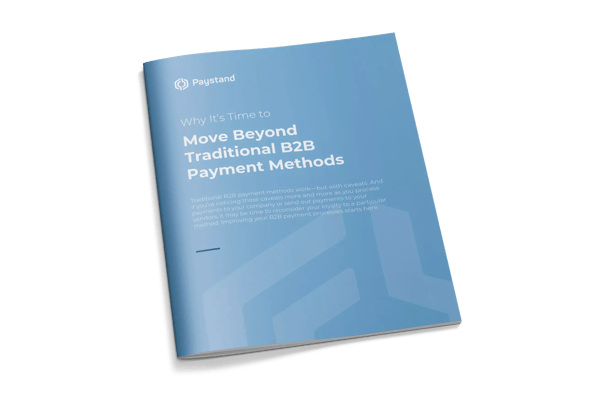Moving Beyond Traditional B2B Payment Methods

Traditional B2B payment methods work — but with caveats like processing fees and chargebacks. And if you’re running into these things more and more as you process and send payments, it’s time to reconsider your loyalty to a particular method. Improving your B2B payment processes starts here.
Traditional Payment Methods and Why They Aren’t Working
The four most common payment methods you’re likely to see are debit/credit cards, automated clearing house (ACH), paper checks, and cash.
- Credit Cards
A credit card may seem like the best B2B payment option — it’s quick and more or less reliable — but cards are rife with high processing fees on every transaction, with a single processing fee ranging from 1.5% to 3.5% of the total transaction cost.
- Automated Clearing House (ACH)
Seemingly a better option than most for B2B payments, ACH payments are cheaper than other B2B payment options because they’re performed directly between banks and not routed through third-party providers. Still, it typically takes two to five business days before funds are deposited.
- Paper Checks
While they may help you avoid transaction fees, checks require a high amount of manual labor to process. Manually processing checks can cost anywhere between $4 and $20 for each check. Checks are also error-prone and a common target for fraud and theft due to their limited security options. Additionally, checks take about two days to process and then require five to seven days to be mailed.
- Cash
The worst payment option of them all. For a company to handle every deal they make only in cash requires a large amount of physical currency on hand and puts the company at extreme risk of fraud and theft. Cash also provides a limited paper trail, making it difficult to track errors.
Fees, long processing times, unnecessary complications, and security risks all undercut your company’s revenue. Luckily, there are solutions to these common B2B payment problems.
Obstacles to Overcoming Those Challenges
As powerful as those challenges are, some roadblocks can stop any attempt to address them, such as paper checks and competing interests.
Checks exacerbate all of the pain points of payment processing — they are prone to fraud, slow to process, expensive, and require an unnecessarily complex manual process — but many companies still stick with them as their preferred payment method. Why? Because of tradition — the lead accountant or CFO has always done it this way, so it becomes how it will always be done.
Both sides of a B2B payment want the entire process to be smooth and easy to manage, but they are, naturally, looking out for their own best interests. Unfortunately, this creates a significant problem because what may be the best option for one side of an agreement isn’t always the best for the other.
However, there are aligning interests on both sides of the B2B payment process.
There’s still hope when trying to find the best B2B payment processing option because there are times when everyone’s needs align.
- Security
Both sides care about the security of transactions. Unsecure transactions make it easy for either side of a deal to be taken advantage of by either not paying the agreed-upon amount or not getting the promised product. Everybody wants a simple, safe, and secure transaction.
- Avoiding Errors
Misprinting just one number on an invoice or making a manual data entry error can carry lasting and expensive consequences. Neither side involved in a B2B payment wants errors because it can lead to more time and work to sort it out.
- Simple Solutions
No one wants to waste time dealing with overly complicated payment processes. Both sides want to focus on their company and not get tied up in long forms and paperwork.
How to Improve B2B Payments
B2B payments don’t have to be a hassle. Here are a few ways businesses can update their payment processing methods and resolve some critical problems.
Automate
One of the best ways to improve your B2B payment process is to automate it. Automation helps solve the most common pain points around processing B2B payments because it significantly reduces the amount of time you have to invest in making it work.
Go Digital
Manual data entry and payment processing are slow and prone to errors. By switching to digital account management tools and payment processing solutions, you will see instantaneous results in your processing speed. A digital account management system is more secure than checks and other payment options, simple to implement, pay, and process, and more cost-effective than traditional manual options.
Simplify the Payment Process
B2B payments shouldn’t be a headache to understand, track, or manage. By keeping unnecessary steps or information to your payment process, you are only making it more of a hassle for both you and your clients.
Look over your process and determine which parts are essential and which can be optimized or even removed.
By trimming the fat and optimizing your payment process, you make managing your clients and your own internal processes more manageable. You save time, money, and effort on both ends of the deal, improving customer relations and giving you more bandwidth to tackle other projects and tasks.
To learn more about why it’s time to change up your payment processes, get your free copy of our ebook, Why it’s Time to Move Beyond Traditional B2B Payment Methods.





